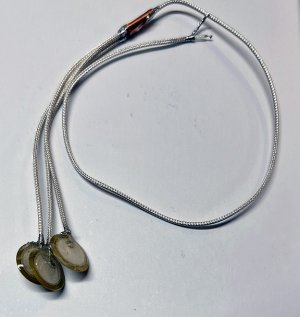Erlend_G
New member
Hey,
I'm pondering on the idea; of getting some cheap 25mm (1") piezo disc components;
and gluing/taping them on the inside of my Epi Wildkat's top/lid.
In theory, they would translate any vibration into a (faint?) audio signal.
The parts are real cheap; though I need to know, if it will work or not...
looking for a subtle "addition of acoustic and other sound", not a hi-fi replication of my guitars sound .
.
Thanks
-E ♪
I'm pondering on the idea; of getting some cheap 25mm (1") piezo disc components;
and gluing/taping them on the inside of my Epi Wildkat's top/lid.
In theory, they would translate any vibration into a (faint?) audio signal.
The parts are real cheap; though I need to know, if it will work or not...
looking for a subtle "addition of acoustic and other sound", not a hi-fi replication of my guitars sound
Thanks
-E ♪


